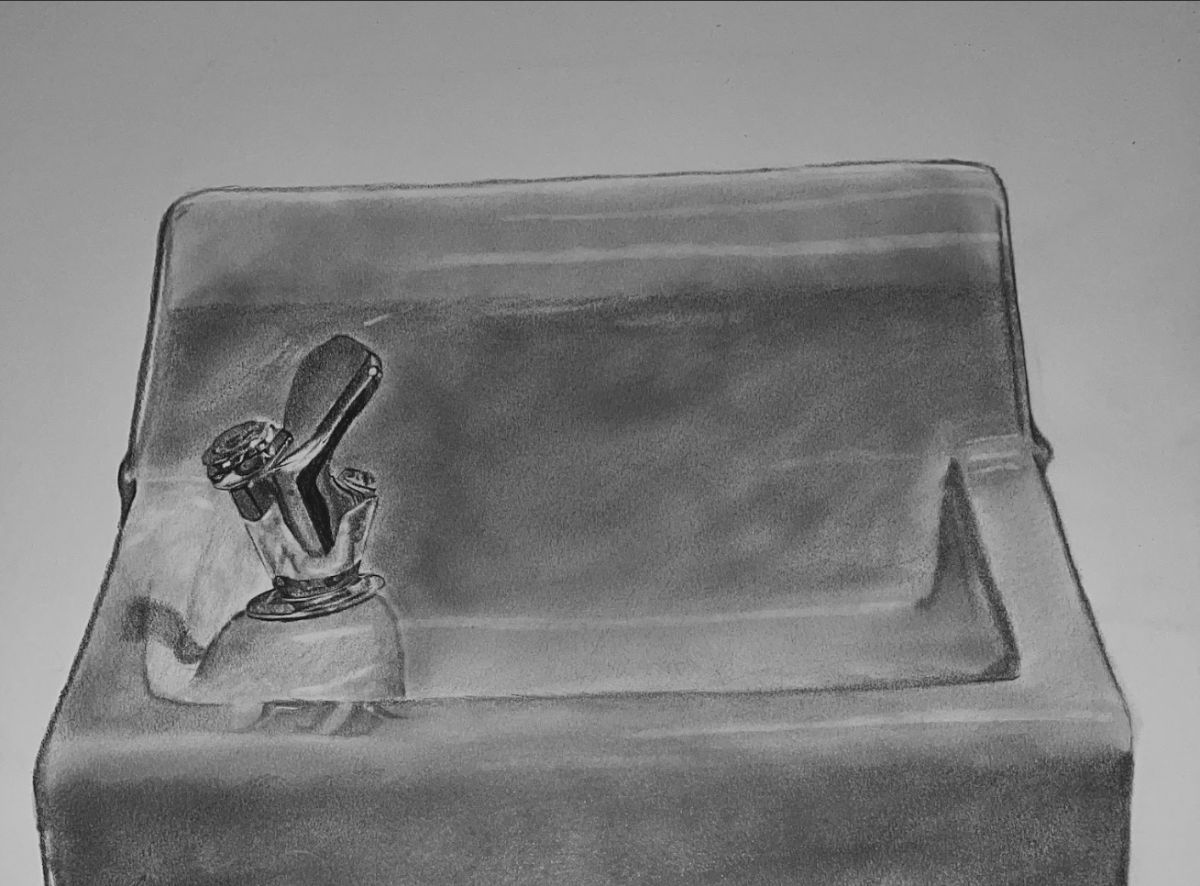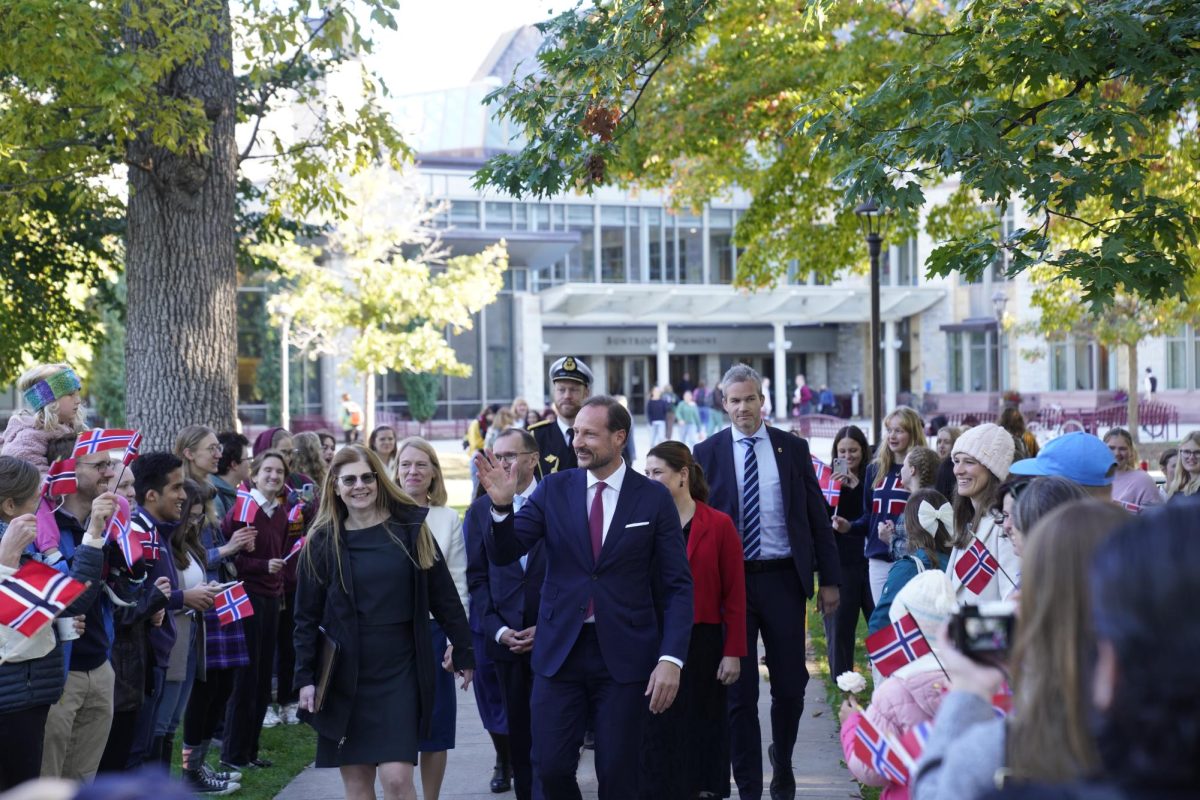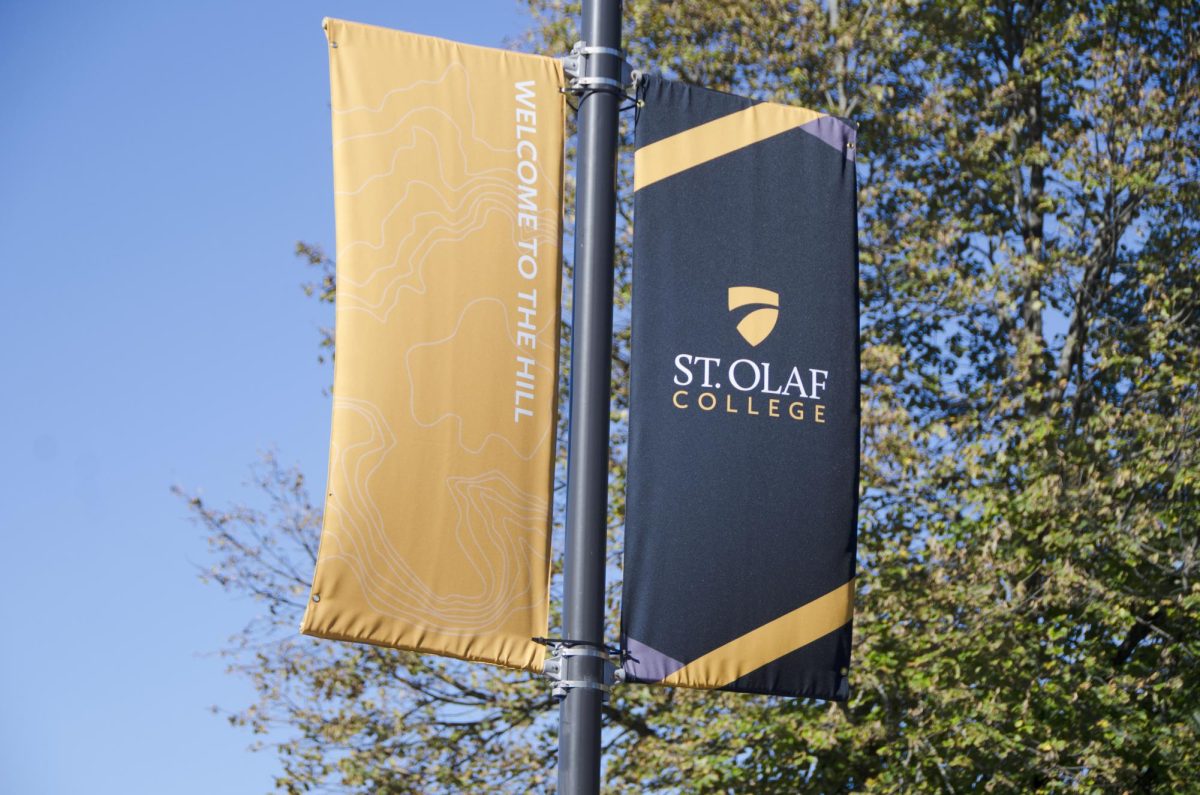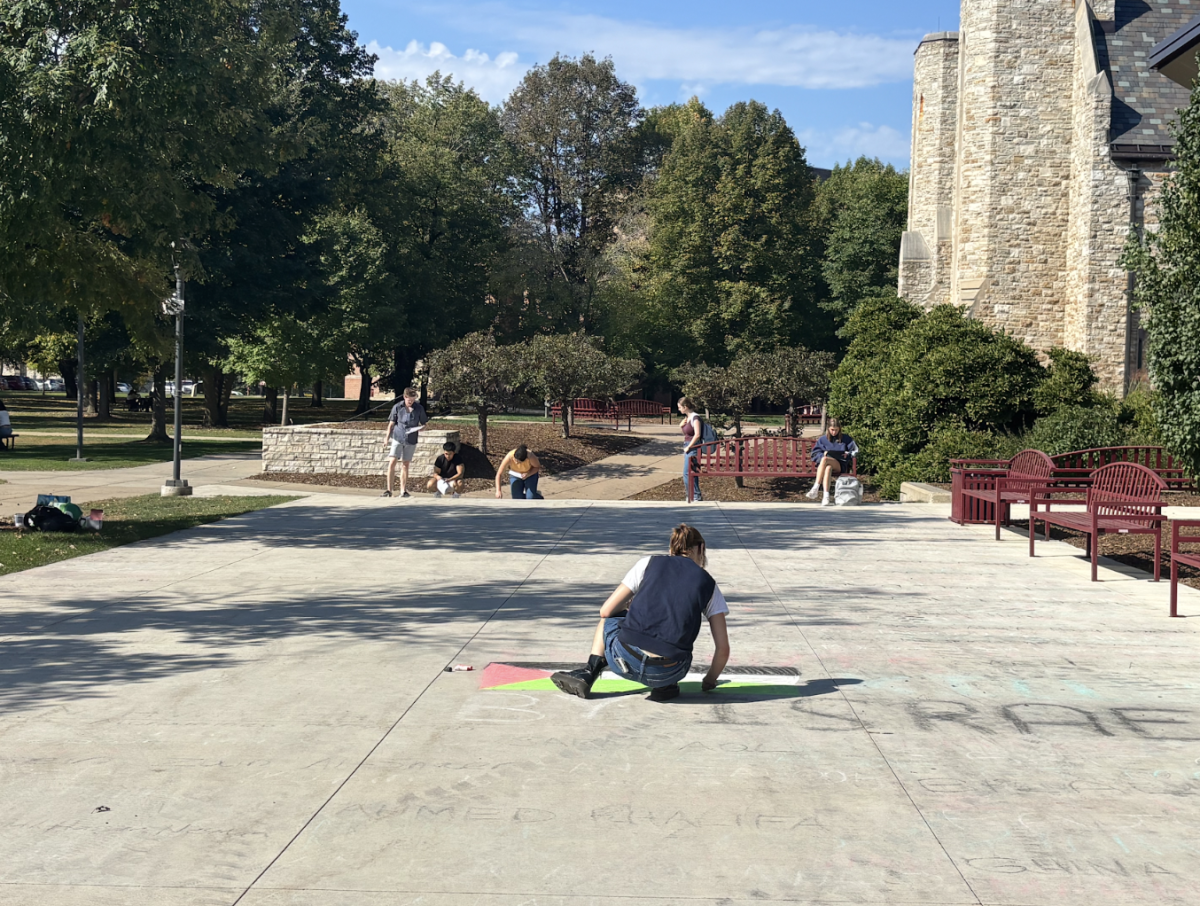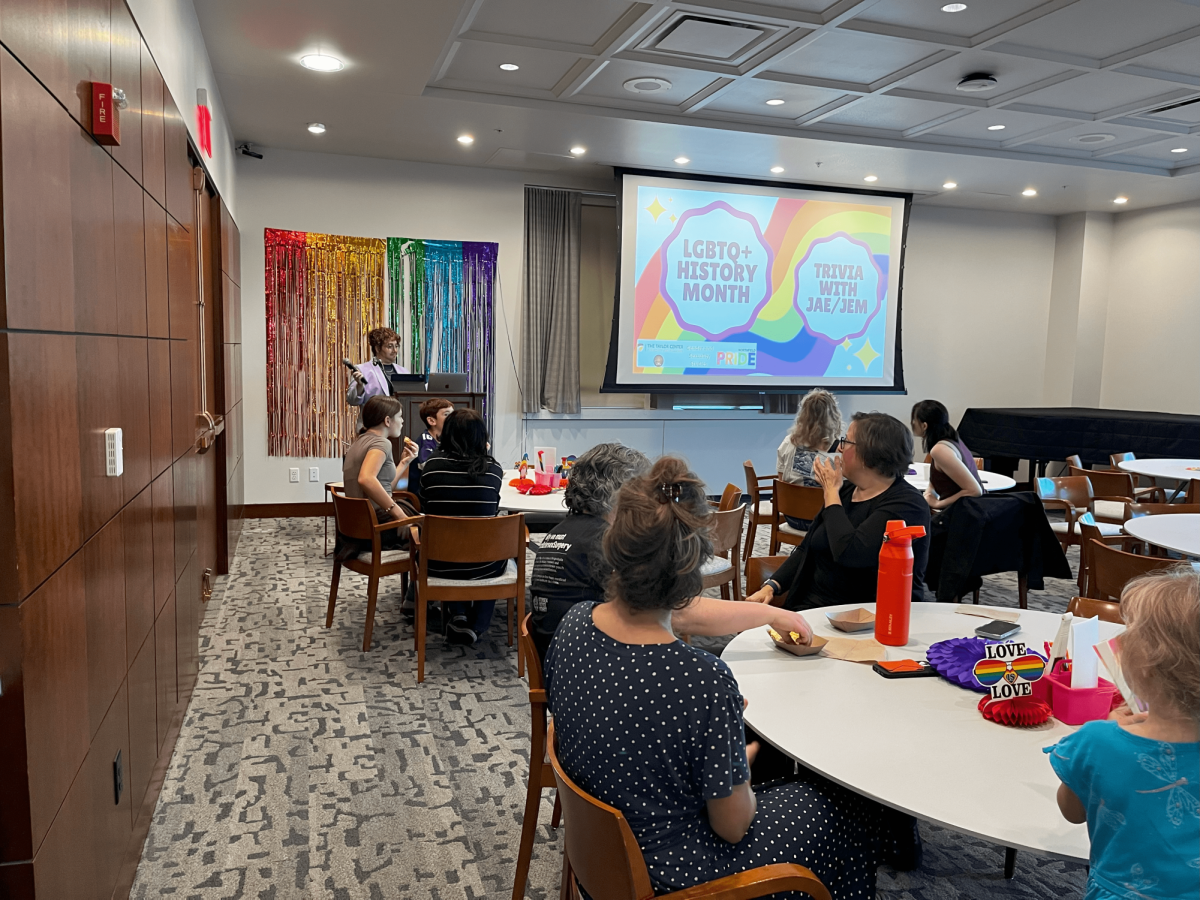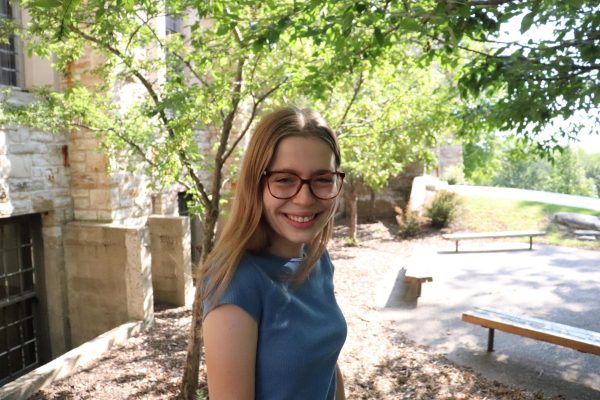Graphic: Finley Hogan/The Olaf Messenger
At the beginning of the 2023-24 academic year, Larson Community Council and Residence Life teams joined together to advocate for updating the building’s drinking water system. While the twelve-floor, upperclassmen residence hall offers a central location on campus and stunning views of surrounding Northfield, it lacks convenient and safe ways for its residents to stay hydrated. The Larson Community Council hopes to raise awareness for this issue and gain campus support for this project.
The idea was born when Maheen Asim ’24, Larson’s Senior Hall Coordinator (SHC), noticed a pattern: new residents wanted to know where they could find a water filtration system in the building. Instead of such a facility, one older-model drinking fountain can be found in the communal restroom per floor, directly next to the row of sinks.
“Being the SHC, it’s my role to make sure that everyone is comfortable and that residents have a safe environment,” Asim said. She cited that the location of the fountains presents a significant health and hygiene hazard, and it also impacts several students of faith for whom it is imperative that drinking water does not come from restroom areas. As a result, many Larson residents resort to drinking unfiltered tap water from the utility room sinks or from the kitchen sinks in the basement. Some residents exit the building altogether to get filtered water from other locations, including Tomson Hall.
With the Community Council’s yearly budget of $1600 — an allowance that goes toward creating fun, relaxing, and educational activities for the hall community every month — Asim proposed two working solutions. One approach would be to install a brand-new water filtration and bottle-filling system in the kitchen. Another would be to move all of the existing drinking fountains out of the restrooms and into the safer and more hygienic location of the adjoining utility rooms. Given the Community Council’s budget constraints, Asim speculates that only one of the solutions will be possible, unless funding is provided from another organization.
In the coming weeks, the teams plan to survey Larson residents on their experiences with accessing water in the building. “It’s going to be a lot of data collection,” Asim said. “That’s where we really need their input.” She added that the more community ideas and feedback received, the easier the Council’s task of presenting the idea to the appropriate authorities will be.
While the process of updating Larson Hall’s current drinking water systems might take months to complete, Asim hopes that some progress toward the goal will have been made by the end of October. Regardless, the initiative is sure to be rewarding for all involved. “We’re going to work actively to enhance the quality of life for the residents,” Asim said. “If I can make a minor difference before graduating it would mean a lot to me.”
